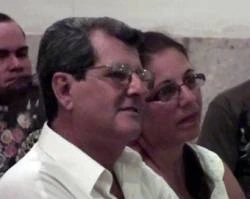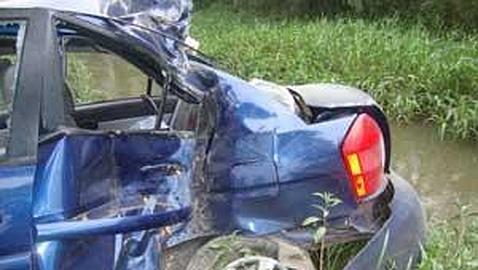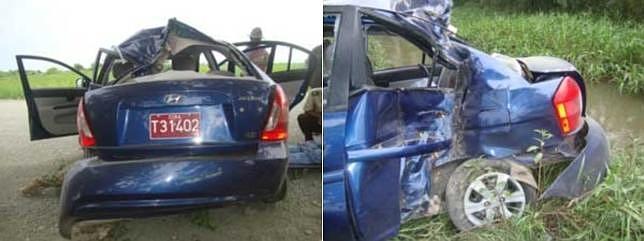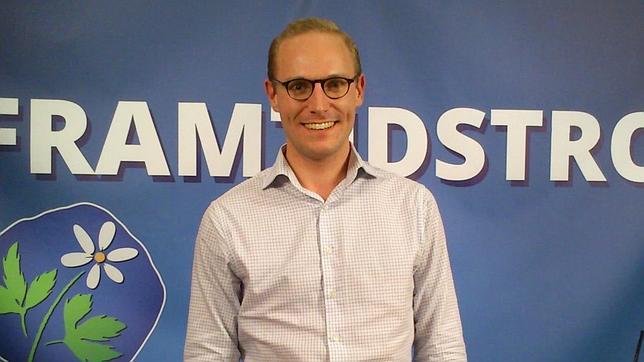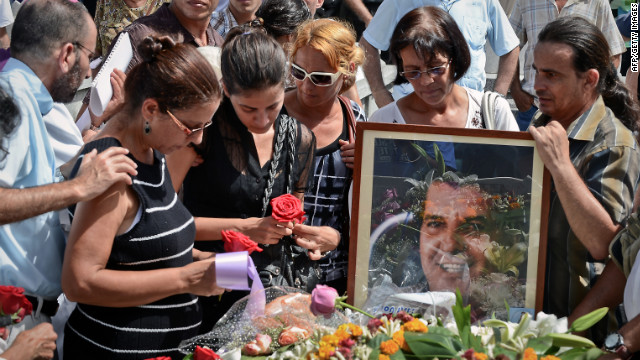Un amigo médico, me contó hace unos días que una doctora, Vice Directora de Medios Diagnósticos de un hospital de La Habana, le dijo: como extrañamos a Payá, tengo una crisis tremenda con varios equipos, y no viene nadie que resuelva el problema.
Hace un mes, me llamó una doctora de otro hospital de la Habana, al tiempo de darme el pésame, me decía: señora mi hospital le debe mucho a su esposo, gracias a él, muchas personas salvaron su vida y pudieron ser operadas.
 Mi esposo estaba enamorado de su trabajo, porque entre otras cosas le permitía el contacto con el ser humano directamente, en una realidad tan sensible como la salud. Cuando se trataba de reparar un respirador artificial estamos hablando de la vida o la muerte de alguien o de tener una incubadora lista o una máquina de anestesia, equipos vitales en un salón de operaciones o una sala de cuidados intensivos. Ese era su trabajo, dar mantenimiento y reparar estos equipos y velar por el funcionamiento correcto del sistema de gases medicinales de los hospitales.
Mi esposo estaba enamorado de su trabajo, porque entre otras cosas le permitía el contacto con el ser humano directamente, en una realidad tan sensible como la salud. Cuando se trataba de reparar un respirador artificial estamos hablando de la vida o la muerte de alguien o de tener una incubadora lista o una máquina de anestesia, equipos vitales en un salón de operaciones o una sala de cuidados intensivos. Ese era su trabajo, dar mantenimiento y reparar estos equipos y velar por el funcionamiento correcto del sistema de gases medicinales de los hospitales.
Fueron tantas las veces, durante tantos años, que a nuestra casa a cualquier hora, llamaban de cualquier hospital de La Habana, bien un anestesista o un intensivista, o hasta un director, para pedirle a Oswaldo que tenían problemas en el salón de operaciones, o determinado equipo estaba dañado y lo necesitaban con urgencia, a veces llamaban en momentos que íbamos a salir y querían precisamente que fuera él, yo protestaba: que llamen a la guardia o a otro especialista ¿por qué tú? Y un día se lo digo a unos de esos médicos, que alguna vez llamó a casa o mandó algún empleado del hospital a buscarlo y me dijo: porque hace todo lo posible por dejarnos el equipo funcionando y confiamos en su trabajo.
No era que fuera el mejor especialista, ni el único, pero hacia su trabajo con mucho amor, motivado por ayudar al prójimo, por aliviar el sufrimiento de las personas, era su sentido de la responsabilidad, que va mas allá del salario miserable que pagan a cualquier trabajador en Cuba, y del trabajo que se pasa para poder trabajar, cientos de veces iba y venía a pie de su trabajo, era preferible que estar esperando un ómnibus que podía demorar dos horas en pasar y después no poder subirte porque va relleno.
Recuerdo la noche que lo llamaron por una urgencia en el banco de oxigeno de un hospital pediátrico, fue algo muy raro, estaba de guardia técnica ese día, fueron a buscarlo a casa y cuando llegó resulta que al tocar el balón que tenia salidero la llave saltó y se hizo trisas en sus manos causándole heridas, las personas huyeron de allí porque pensaron que iba a explotar, por puro milagro de Dios, no sucedió la explosión, logró desactivar ese balón y conectar el sistema nuevamente y de ahí para urgencias a curar su mano , cuando llegó a casa me asusté mucho porque hasta en el rostro tenia pequeñas heridas ocasionadas por residuos metálicos de la llave. ¿Por qué estaba esa llave en esas condiciones? Es una pregunta que todavía me hago, podía haber explotado el hospital, con todos dentro y él también, corrió un grave riesgo su vida esa noche, por varios días estuve muy preocupada.
Me he puesto a recordar en estos días, las veces que la Seguridad del Estado, lo seguía con varios agentes por todos los hospitales en que trabajaba, cuando llegaba al taller, ya estaban allí y no lo abandonaban durante toda la jornada de trabajo, luego me contaba: “ cuando salgo del salón de operaciones o de la sala de terapia, los encuentro apostados en la puerta, me siguen donde quiera que voy, ya todos se dan cuenta, hasta chistes me hacen algunos,” esto ocurría invariablemente siempre que Fidel Castro salía de viaje fuera de Cuba, y no era una rutina, siempre le hacían llegar el mensaje: “ Si al Comandante le pasa algo, tú lo vas a pagar con tu vida y eso se repetía siempre que viajaba”.
Durante ese tiempo estaba siempre preocupada, su trabajo era muy delicado, siempre temí y sus amigos también, que trataran de perjudicarlo, provocando alguna alteración que indicara una negligencia laboral.
Pero no pudieron por ahí, Oswaldo era muy responsable con su trabajo, sabía los riesgos que corría y que de su trabajo, dependía la vida de las personas por eso siempre revisaba varias veces cada reparación que hacía y la comprobaba con el médico antes de dar por terminado su trabajo. La seriedad en su trabajo le había ganado un prestigio y una confianza en lo que él daba por revisado o reparado que preferían todos que fuera él quien les certificara la correcta instalación y funcionamiento de los sistemas de gases una vez que se reparaban o se construían nuevos.
Me contaba una persona, trabajadora de un hospital de los tantos que Oswaldo trabajó, que en una reunión de los funcionarios del hospital con el director, este agobiado, con tantas quejas y problemas por el atraso de las intervenciones quirúrgicas algo muy serio, cuando no se puede operar a tiempo las personas se mueren, el director muy alterado dijo: “yo quiero que me manden al mercenario, al contrarevolucionario, ese es el que se mete y resuelve los problemas, ese es el que quiero aquí”. Nadie fue capaz de decir nada. Ese era mi marido.
La situación de deterioro progresivo que invade el sistema de salud pública, cada vez más, lo tenía angustiado. Muchas veces para reparar un equipo en un hospital, tenía que ir a buscar la pieza que necesitaba en otro equipo que ya era baja técnica y estaba tirado en algún taller de otro hospital, se tomaba el trabajo de encontrarlo sacarle la pieza para poder echar andar el equipo, que cualquier persona pudiera necesitar de urgencia. Hay quienes terminan más rápido, dan baja técnica, por no tener la pieza en existencia, esos prefieren no pasar trabajo, ¿para qué? por desgracia que estas actitudes sucedan cada vez más, es la huella del daño antropológico de tantos años de totalitarismo, además de las carencias materiales, las carencias de humanidad, son cada día más evidentes, tanto que oyes a las personas expresarse así: “ lo último es caer en un hospital” o “ si no tienes un médico amigo ni vayas al hospital”. Aunque estoy convencida que muchos lugares funcionan aún gracias a que hay profesionales de la medicina, que trabajan solo por amor a su profesión y a las personas, pero es evidente que están muy agotados y no pueden hacer milagros y esta situación los sobrepasa. Mi esposo me contaba de un cirujano que con tal de echar andar el salón de operaciones de su pequeño hospital, habló directamente con él, para que se responsabilizara con ese trabajo y estuvo recogiendo a Oswaldo, en el taller durante varios días con su carro y gastando su gasolina, para poder transportar los implementos necesarios para la reparación, porque su hospital no disponía de transporte para eso. Necesitamos muchas personas así, que el amor a su trabajo y a las personas, es lo que importa, esos son los que transforman el mal en bien.
Los compañeros de trabajo de Oswaldo saben que lo que cuento es totalmente verdad, son cientos las anécdotas de su vida laboral, que él disfrutaba mucho por cierto a pesar de la vigilancia y el control que sobre sus jefes y compañeros que ejercía la Seguridad del Estado, que nunca les permitió, que progresara técnica ni profesionalmente ni reconocimiento oficial por su labor, recuerdo cuando lo votaron de la Universidad, hace unos año, alguien en su trabajo le dio la oportunidad de que hiciera un post grado en la Cujae, al segundo día lo expulsaron por contrarevolucionario, no era digno de estar sentado ahí, todavía recuerdo como lloraba una compañera de trabajo que estaba en la misma aula y presenció lo que le hicieron. Sé que la mayoría de sus compañeros le querían mucho y que no vienen a casa porque tienen miedo, saben muy bien que ha pasado y cuanto lo han perseguido y odiado siempre, sabe Dios cuanto los habrán intimidado por haber ido al cementerio y al velorio, algún día lo sabremos, como tantas otras cosas.
Hace hoy dos meses y ocho días que nos privaron de su presencia física, cada día sus hijos y yo lo extrañamos más, pero cada día también, estamos más orgullosos de él. Le damos gracias a Dios por el regalo que representa haberlo tenido como esposo y como padre.
Ofelia Acevedo Maura.
